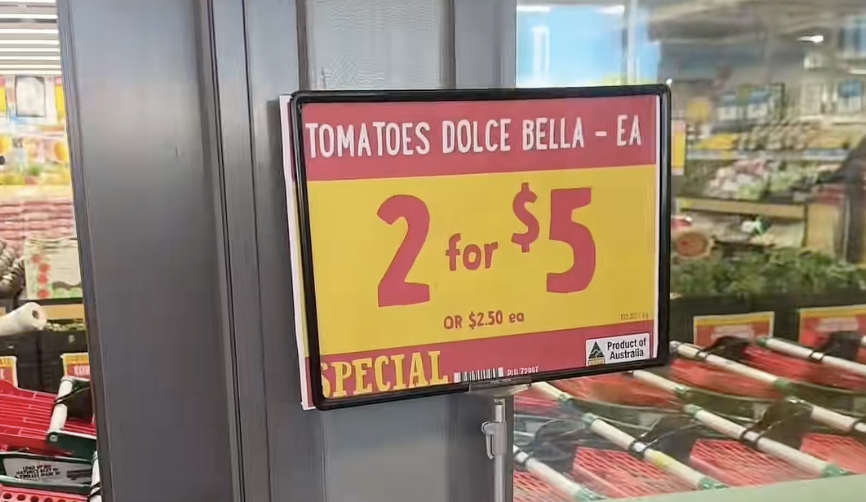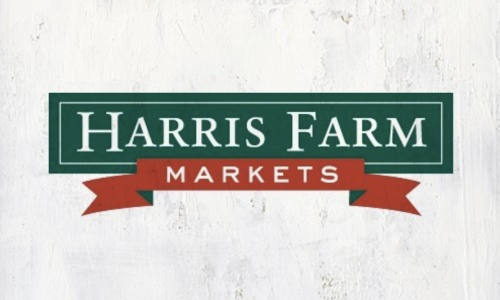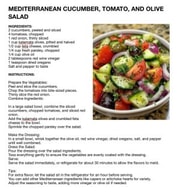
You're wheeling your trolley through the fresh produce section, carefully checking prices to make your pension stretch as far as possible, when you spot what looks like a great deal: '2 for $5' on cherry tomatoes.
But hang on—a quick bit of mental arithmetic reveals each punnet costs $2.50 anyway. So what's the point of the sign?
This exact scenario has sparked a heated debate among Australian shoppers, with many questioning whether Harris Farm Markets' pricing approach is genuinely helpful or potentially misleading.
The controversy highlights a broader issue affecting budget-conscious seniors: how to navigate increasingly complex supermarket pricing in an already challenging cost-of-living environment.
In this article
What's got shoppers divided
The debate started when TikTok user Alex Begnell noticed Harris Farm's signs advertising cherry tomatoes at 'two punnets for $5' when individual punnets were priced at $2.50 each. She spotted a similar scenario with mangoes - $2.99 each or two for $6.
Alex, who has a retail background, argues this approach uses 'misleading language' that could catch out busy shoppers. 'It's disappointing to see another big supermarket targeting busy Australians,' she said, despite acknowledging she'll continue shopping at Harris Farm for their product range and overall experience.
The reaction from fellow shoppers was swift and divided. Some agreed wholeheartedly, with one person saying: 'I get so angry every time I go there and see this.' Others defended the approach, appreciating that they can get the sale price without being forced to buy multiples.
Harris Farm's philosophy behind the pricing
Harris Farm Markets, established in 1971, was the first Australian exclusively market-style fruit and vegetable retailer to open in a supermarket-style operation, stocking fruit and vegetables, cheeses, deli items, and gourmet groceries, and pioneering the 'imperfect picks' concept to combat food waste.
'Unlike other retailers, we don't penalise shoppers to buy in bulk to access value, especially if you're a retiree, a student, an empty-nester, or just doing it tough'
The family-owned business, now led by three of founder David Harris's sons who share the CEO title, with Catherine Harris as chairperson, has built its reputation on a clear philosophy: no one should be penalised for buying less.
Owner David Harris explained their approach in a social media video earlier this year: 'A lot of people say, 'Shouldn't they be cheaper for two?' Well, no. We think two for $5 is the right ticket. We've got a lot of customers who don't want to buy two, and my belief is that they shouldn't be penalised for it.'
Understanding the two camps
The critics' perspective
Those who find the pricing misleading argue that it's deliberately designed to catch out rushed shoppers. The concern is particularly relevant for older Australians who may be dealing with:
- Time pressure during shopping trips
- Cognitive load of managing tight budgets
- Assumption that 'multi-buy' offers represent genuine savings
The supporters' view
Defenders of Harris Farm's approach appreciate several benefits:
- No penalty for small households or those on tight budgets
- Clear pricing for individual items
- Flexibility to buy exactly what you need
- Genuine transparency rather than hidden conditions
Harris Farm's pricing approach
- Individual item prices are clearly displayed
- Multi-buy offers don't provide additional discounts
- No minimum purchase required for sale prices
- Designed to help small households and budget shoppers
- Differs from traditional 'buy more, save more' models
Source: @thriive.hc / Tiktok.
How this compares to other supermarkets
Most major Australian supermarkets use traditional bulk pricing where you must buy multiple items to access sale prices. For example, you might see 'Buy 2 for $8, normally $5 each' - meaning you pay full price for buying just one item.
Harris Farm's approach reflects their fresh produce focus, which represents about 50 per cent of their business, with the chain running about 20,000 SKUs and over two dozen stores across an expanding geographic footprint.
The company has invested heavily in technology to manage their complex inventory, using AI and machine learning for demand forecasting to reduce waste and improve availability.
Practical shopping tips for seniors
Whether you shop at Harris Farm or elsewhere, here are strategies to navigate modern supermarket pricing:
Before you shop:
- Check store websites for current specials
- Make a list with approximate prices to track spending
- Take a calculator or use your phone's calculator app

In-store strategies:
- Read the fine print on promotional signs
- Calculate per-unit prices for true comparisons
- Don't assume multi-buy offers are always better value
- Ask staff if you're unsure about pricing terms
For Harris Farm specifically:
- Remember their individual pricing applies to single purchases
- Multi-buy signs show total cost, not savings
- Take advantage of their 'imperfect picks' range for budget savings
Your consumer rights
Under Australian Consumer Law, pricing must not be misleading or deceptive. However, the law doesn't require retailers to offer bulk discounts. If you believe pricing is genuinely misleading, you can contact the ACCC or your state's consumer protection agency.
What this means for budget-conscious shoppers
For seniors managing fixed incomes, Harris Farm's approach could actually be beneficial. You're not forced to buy larger quantities than you can use, which is particularly important for:
- Fresh produce that may spoil before consumption
- Households of one or two people
- Those with limited storage space
- Anyone trying to minimize food waste
However, it's worth noting that customer reviews indicate Harris Farm's prices can be competitive, with some reporting butcher items 'cheaper than the supermarkets'.
The key is understanding what you're looking at. Harris Farm's signs aren't advertising savings—they're showing you the maths for buying multiple quantities at their standard per-unit price.
The bigger picture
This pricing debate reflects broader challenges facing Australian shoppers, particularly seniors:
- Increasing complexity in retail pricing strategies
- Rising cost of living pressures
- Need for transparent, easy-to-understand pricing
- Balancing quality with affordability
Harris Farm has successfully reduced wastage significantly through better inventory management, which has reduced costs and improved profits, potentially allowing them to maintain their single-item pricing approach.
Whether you see Harris Farm's pricing as refreshingly honest or unnecessarily confusing may depend on your shopping preferences and circumstances. What's clear is that the company has made a deliberate choice to buck traditional retail trends in favor of what they believe serves their customers better.
Example Scenario
- Margaret, 72, lives alone and wants to make a stir-fry. At a traditional supermarket, capsicums might be '2 for $4' (normally $2.50 each). She'd pay $2.50 for one, missing the bulk discount. At Harris Farm, if capsicums are $2 each or '2 for $4,' she pays exactly $2 for one capsicum—no penalty for her smaller household size.
What This Means For You
As grocery prices continue to rise across Australia, understanding different retailers' pricing strategies becomes increasingly important for making informed shopping decisions. Whether Harris Farm's approach represents progress toward fairer pricing or simply clever marketing dressed up as consumer benefit, the debate has certainly got people thinking more carefully about how supermarkets present their prices.
What's your take on Harris Farm's pricing approach? Do you prefer traditional bulk discounts or appreciate the no-penalty pricing? Have you noticed similar pricing strategies at other stores? Share your thoughts and shopping experiences in the comments below.
Primary Source
https://www.news.com.au/lifestyle/f...ac20af89964d3fed5e60e070500899?from=rss-basic
Promotions | Get Harris Farm Promotions and Discount Codes—Harris Farm Markets
Cited text: Shop Online at Harris Farm Markets and receive a FREE 1 MONTH DELIVERY PASS when you spend $120 or more on your first order.
Excerpt: The debate started when TikTok user Alex Begnell noticed Harris Farm's signs advertising cherry tomatoes at 'two punnets for $5' when individual punnets were priced at $2.50 each
https://www.harrisfarm.com.au/pages/promotions
Harris Farm Markets—Wikipedia
Cited text: Harris Farm Markets was the first Australian exclusively market-style fruit and vegetable retailer to open in a supermarket-style operation. Harris Fa...
Excerpt: Harris Farm Markets, established in 1971, was the first Australian exclusively market-style fruit and vegetable retailer to open in a supermarket-style operation, stocking fruit and vegetables, cheeses, deli items, and gourmet groceries,…
https://en.wikipedia.org/wiki/Harris_Farm_Markets
Harris Farm Markets—Wikipedia
Cited text: Following this, the company rebuilt itself and in 2010, David Harris, the founder, passed on the leadership of the company to three of his five sons, ...
Excerpt: The family-owned business, now led by three of founder David Harris's sons who share the CEO title, with Catherine Harris as chairperson
https://en.wikipedia.org/wiki/Harris_Farm_Markets
Harris Farm Markets Leverages Demand Forecasting | Food Logistics
Cited text: The genesis of Harris Farm is very much around fresh produce—which is about 50 per cent of their business.
Excerpt: Harris Farm's approach reflects their fresh produce focus, which represents about 50 per cent of their business, with the chain running about 20,000 SKUs and over two dozen stores across an expanding geographic footprint
https://www.foodlogistics.com/softw...ris-farm-markets-leverages-demand-forecasting
Harris Farm Markets Leverages Demand Forecasting | Food Logistics
Cited text: Harris Farm runs about 20,000 SKUs, or stock keeping units, with a subset of concurrent fresh produce running at 1200; Pink Lady apples have more than...
Excerpt: Harris Farm's approach reflects their fresh produce focus, which represents about 50 per cent of their business, with the chain running about 20,000 SKUs and over two dozen stores across an expanding geographic footprint
https://www.foodlogistics.com/softw...ris-farm-markets-leverages-demand-forecasting
Harris Farm Markets Leverages Demand Forecasting | Food Logistics
Cited text: With over two dozen stores and an expanding geographic footprint, the chain needed a way to consistently meet consumers’ demand for variety and freshn...
Excerpt: Harris Farm's approach reflects their fresh produce focus, which represents about 50 per cent of their business, with the chain running about 20,000 SKUs and over two dozen stores across an expanding geographic footprint
https://www.foodlogistics.com/softw...ris-farm-markets-leverages-demand-forecasting
Harris Farm Market (2025) - All You Need to Know BEFORE You Go (w/ Reviews & Photos)
Cited text: Beautiful Chuck Steak from the butcher, also prepacked Pork Belly—both cheaper than the supermarkets!
Excerpt: customer reviews indicate Harris Farm's prices can be competitive, with some reporting butcher items 'cheaper than the supermarkets'
https://www.tripadvisor.com.au/Attr...views-Harris_Farm_Market-New_South_Wales.html
Harris Farm Markets Leverages Demand Forecasting | Food Logistics
Cited text: In addition, wastage has declined significantly, which has reduced costs and improved profits.
Excerpt: Harris Farm has successfully reduced wastage significantly through better inventory management, which has reduced costs and improved profits
https://www.foodlogistics.com/softw...ris-farm-markets-leverages-demand-forecasting







